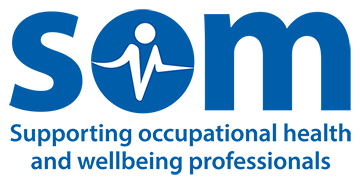
Fatima Catarro
How did you get into this career?
My first post as an occupational therapist (OT) working for the MoD was at the Defence Medical Rehabilitation Centre (Headley Court). Through my work at DMRC, my occupational medicine (OM) consultants and occupational health nurse (OHN) peers were able to see the added value that an OT could bring to the occupational health (OH) capability, and I was invited to expand the role of OT into OH. Following success in the initial implementation, we have been able to employ more OTs within our OH teams to support service personnel across the UK. ...
What qualifications are needed?
OTs are equipped with skills at an undergraduate level that allow us to seamlessly transition into OH. Our dual training helps us to support workers with both mental health and physical issues. Our professional foundation is underpinned by skills that allow OTs to translate functional gains attained in a rehabilitation setting into a dynamic work environment. We are equipped with skills to adapt tasks or work environments to maximise work engagement and minimise risk of physical or psychological re-injury. OT foundation training encompasses assessing and intervening within a biopsychosocial model – a model of practice that is well aligned to an MDT OH delivery. As the military might say, “It says it on the tin” meaning that our protected professional title already encompasses occupation.
What is a typical day for you?
Close collaborative working with medical centres (GPs), physical and psychological rehabilitation services to maximise recovery and ensure goals and expectation management is aligned for the service person. Working within an MDT team to ensure we utilise our skills and expertise for the benefit of the service person. Maintaining close relationships with the chain of command (line mangers) to ensure understanding of the employment demands and the uniqueness of the work role. Working closely with service personnel within their unique work environments to maximise employment where clinically indicated.
Best part of job?
The great thing about being an OT within an Army Occupational Health team is that every day is different. I can be on a firing range one day assessing soldiers’ ability to safely handle and fire their weapons within their employment policy despite their clinical condition, and the next day I can be assessing the job demands of the tank operator to inform the employer how to maximise his employment whilst considering current restrictions. I can be asked to deliver a functional capacity evaluation which can inform appropriate rehab goal setting, or to observe and measure function of a soldier, rather than a reliance on self-reported level of functions. Additionally, working with passionate peers, who see the value of IDT working makes for an amazing workplace.
Most challenging part of job?
Integrating a new set of skills into a traditionally nurse and doctor service has presented some difficulties. Language has often caused the greatest challenge. It became very apparent that although we use similar terminology, our products often vary considerably. For example, a workplace assessment to my OHN peers often refers solely to a DSE assessment however for OTs it means a holistic approach to the assessment of the workplace and job demands, ergonomic and human factors, the cultural and socio-environmental factors. Within Army OH, there has been a greater acknowledgement that OTs have specialist skills that can have a positive impact to the care of soldiers and enhances this overall delivery of OH services.
Why would you encourage OTs to choose a career in OH?
I would encourage OTs into this role as it is well aligned with our training, and our professional skills can greatly contribute to the health of the workforce. As an OT, if you have completed a home assessment, then you can complete a workplace assessment, if you understand activity and task analysis then you can undertake a job demand analysis, if you can grade rehabilitation goals then you can produce a return to work programme that looks at more than just graduated hours at work, if you have ever assessed someone’s function to make a cup of tea in the OT kitchen then you can assess a soldier’s function to safely fire his weapon.
Any final thoughts?
The uniqueness of the role has encouraged us to look at the utility of OT skills across the whole spectrum of OH delivery within the Army, from recruitment through to the use of job demand analysis to strategically inform redeployment of service personnel.
The cost benefit of employing an OT who is dual trained, who has a good understanding of activity analysis and skills in workplace/task adaptations, means that any OH provider has a skilled clinician ready to deliver without the need for further training. The one-stop shop that is an OT makes for good value for money for the OH provider but ultimately for the service person/employer. OTs are ‘ready-made’ OH clinicians.

